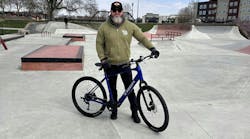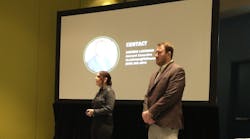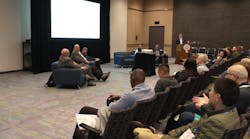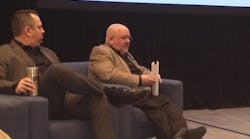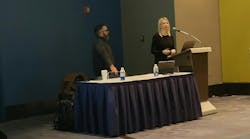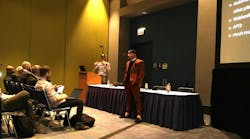Last year was the warmest year since global records began in 1850, and global temperatures will continue to rise, according to Climate.gov. This warming has manifested in extreme climate events and violent storms.
What happens to HVAC systems when these weather events occur? Many times, people lose power – no heat, no air conditioning – for days or weeks at a time. The development of resilient building systems and HVAC technology must be a priority for the industry.
Bill Spohn, P.E., president and CEO of TruTech Tools; Eric Kaiser, industry engagement manager of TruTech Tools; and Ben Lipscomb, P.E., (pictured) director of engineering and utility services at National Comfort Institute, spoke on these subjects Jan. 24 at the 2024 AHR Expo in Chicago.
Kaiser explained how heat pumps combined with proper insulation and a generator can keep people comfortable until professionals can restore power and make repairs.
Lipscomb discussed five climate-resilient HVAC goals:
- Dramatically reduce emissions relative to fossil-fuel heat sources.
- Limit negative impacts on electricity grid reliability.
- Handle potential for higher average temperatures and more extreme weather events.
- Provide essential services (such as heating) in an extended grid outing event.
- Provide pricing flexibility through peak demand management or fuel flexibility.
He also described best practices in building and system assessment, equipment selection, duct system sizing, home performance improvements, and installation and commissioning.
Spohn ended the session with his experiences building a home with Passive House design. "New construction is not immune" to heating problems. After investigations and troubleshooting, he discovered that his heat pump system was installed by someone on the general contractor's payroll, not a professional HVAC technician.
The solution implemented by a trained HVAC technician was to replace the complete refrigerant circuit (two coils and line set) using proper tools and processes.
